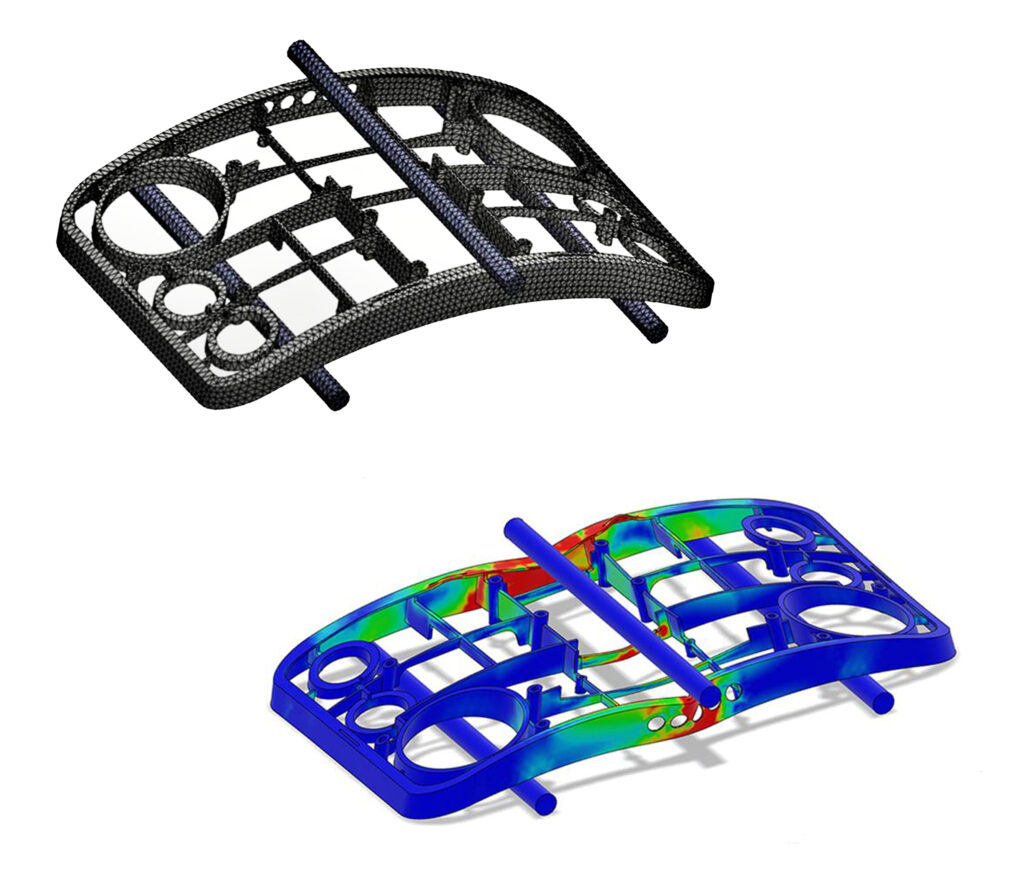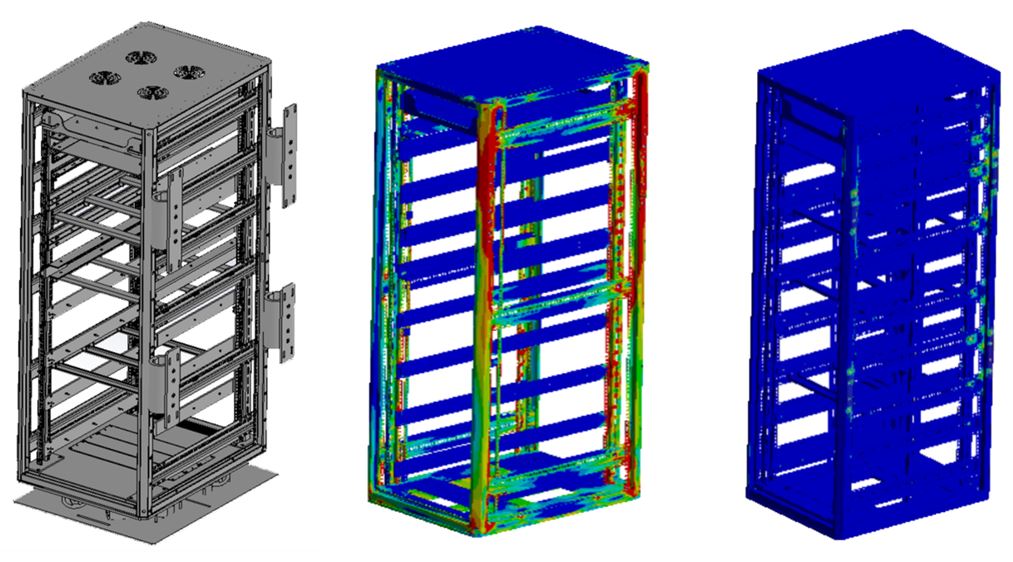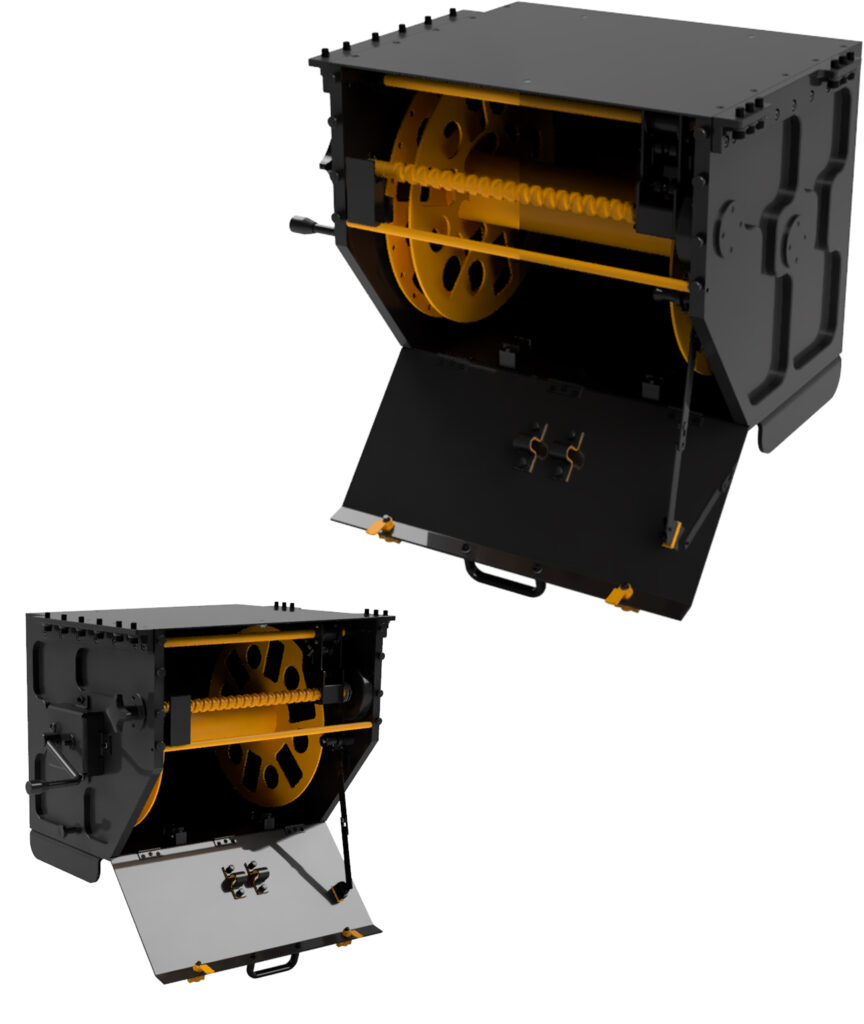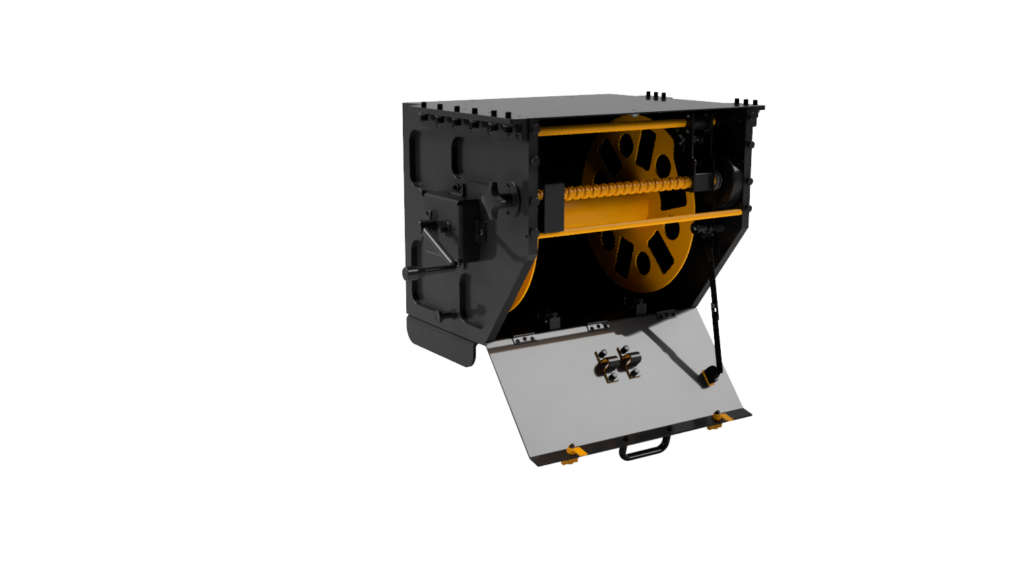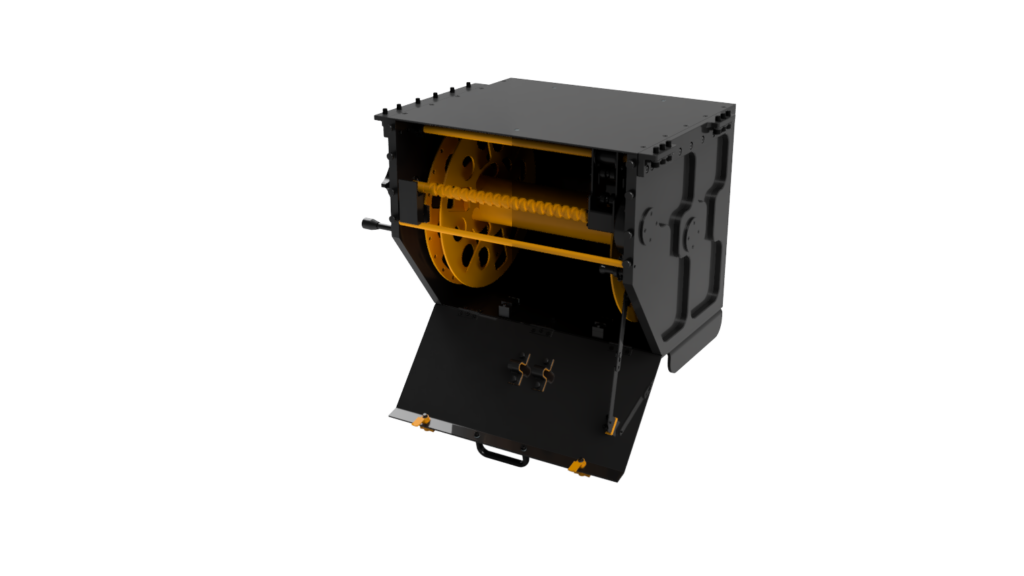Design Services
From the definition of current needs and problems to the final deliverable product, the design of a concept, design verification, optimization applications and prototype production are among the strongest capabilities of SIMUNES within the scope of interdisciplinary engineering approaches. By evaluating all the needs of the user, special design solutions are created that fully meet their needs. Relevant standards are determined, and then the scope of the next activities that will determine the result of the design is defined, ensuring that the projects are carried out at the highest level of quality and reliability. In projects; The highest priority is given to details that include characteristics of components, raw materials, dimensions and tolerances to validate variables such as critical loads, deflections, movements and strength requirements. Considering this special level of detail and precision, the most applicable engineering solutions are developed and presented to the user.

In projects; The highest priority is given to details include characteristics of components, raw materials, dimensions and tolerances to validate variables such as critical loads, deflections, movements and strength requirements. Considering this special level of detail and precision, the most applicable engineering solutions are developed and presented to the user. Design applications for the automotive sector; ECE R-14 Approval of Motor Vehicles on Seat Belt Connections, ECE R-16 Approval of Seat Belts, ECE R-17 Approval of Motor Vehicles on Seats, Connections and Headrests, and ECE R-21 Approval of Motor Vehicles on Interior Equipment standards are carried out in accordance with the requirements.
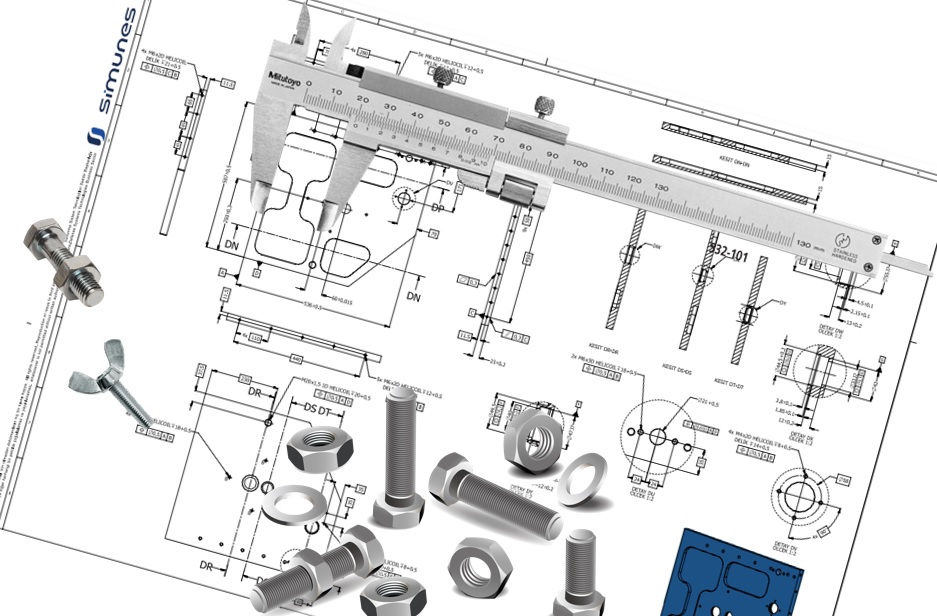
Preliminary Design
When starting a design project, first SIMUNES engineering team lists the design requirements for defining the problem, researching the requirements, creating concept models, conducting a feasibility assessment and completing the preliminary design.
During the research phase, it is of great importance for the engineer to obtain the necessary information, including possible problems, solutions, costs and market requirements, and to collect the desired data by conducting research in this direction. In the problem definition & design requirements analysis phase, all the design requirements of the project are defined until the end of the engineering design process.
This phase includes an assessment of the end user's needs, system features and functions. This study can be carried out together with the feasibility analysis and may include the planning of mechanical and aerodynamic test requirements.
During the research phase, it is of great importance for the engineer to obtain the necessary information, including possible problems, solutions, costs and market requirements, and to collect the desired data by conducting research in this direction. In the problem definition & design requirements analysis phase, all the design requirements of the project are defined until the end of the engineering design process.
This phase includes an assessment of the end user's needs, system features and functions. This study can be carried out together with the feasibility analysis and may include the planning of mechanical and aerodynamic test requirements.
A project's feasibility study supports the decision-making process by analysing and summarising the various alternatives or techniques for the project, narrowing the options to include only the most relevant scenarios. This phase allows the engineering team to start creating project schedules, planning resource requirements, determining whether the project is achievable and producing the design within a certain budget.
The next step is to identify the concept phase to evaluate possible solutions using cost management, risk assessment and conceptual design techniques. These concepts are defined in accordance with the requirements and conditions of the desired design. Design verification tools are used to detect weaknesses in the design. With the team work carried out by the design and analysis engineers together, this situation is evaluated and the necessary solution suggestions are determined.
The next step is to identify the concept phase to evaluate possible solutions using cost management, risk assessment and conceptual design techniques. These concepts are defined in accordance with the requirements and conditions of the desired design. Design verification tools are used to detect weaknesses in the design. With the team work carried out by the design and analysis engineers together, this situation is evaluated and the necessary solution suggestions are determined.
Conceptual Design
Conceptual design is the first step in the multiphase process involved in creating a new product. Product cost and innovative design solutions are clarified at this stage. In this context, conceptual design is the most important stage of the engineering design process. In the conceptual design process of each project, there are basic principles to be considered, depending on the competencies of the project.
Conceptual design is even more important in original and innovative products. Because a design solution at this important stage; It directly affects quality, cost, time, creativity and innovation. In other words, the biggest contribution to the innovative aspect of the project is provided at this stage. For this reason, it is of paramount importance to include creative solution-finding techniques in the studies. The innovation process starts with producing creative ideas suitable for needs or problems.
In order to use innovation techniques in conceptual design, innovation must first be analysed. Innovation aims to commercialize a product or process with a high innovation aspect and achieve high added value. Here, it is very important to support the creativity level of the project with the commercial function.
Conceptual design is even more important in original and innovative products. Because a design solution at this important stage; It directly affects quality, cost, time, creativity and innovation. In other words, the biggest contribution to the innovative aspect of the project is provided at this stage. For this reason, it is of paramount importance to include creative solution-finding techniques in the studies. The innovation process starts with producing creative ideas suitable for needs or problems.
In order to use innovation techniques in conceptual design, innovation must first be analysed. Innovation aims to commercialize a product or process with a high innovation aspect and achieve high added value. Here, it is very important to support the creativity level of the project with the commercial function.
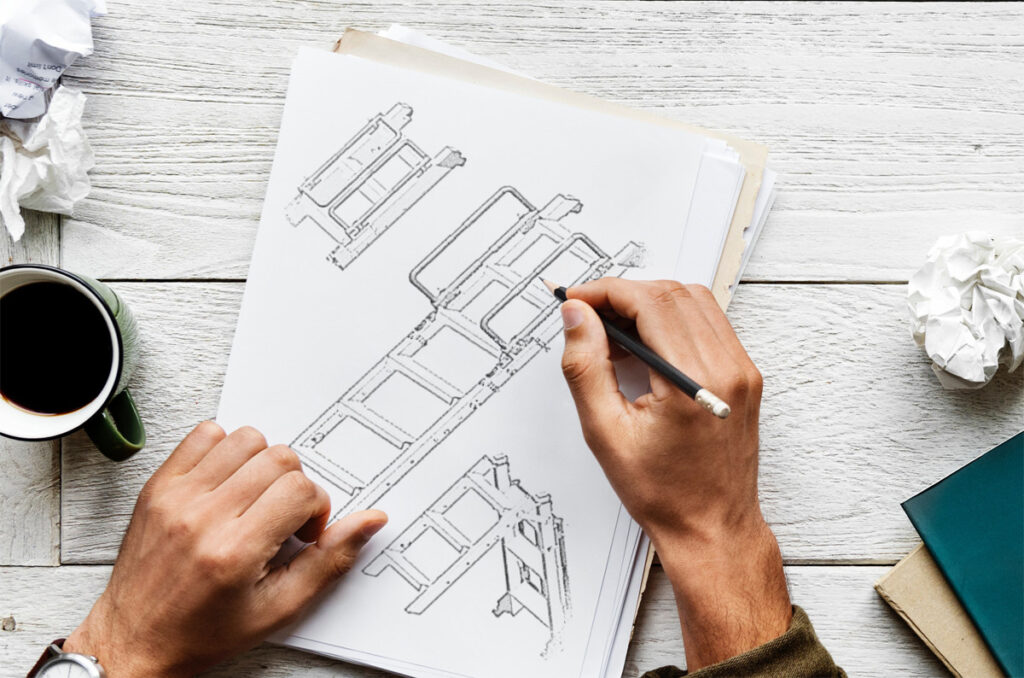
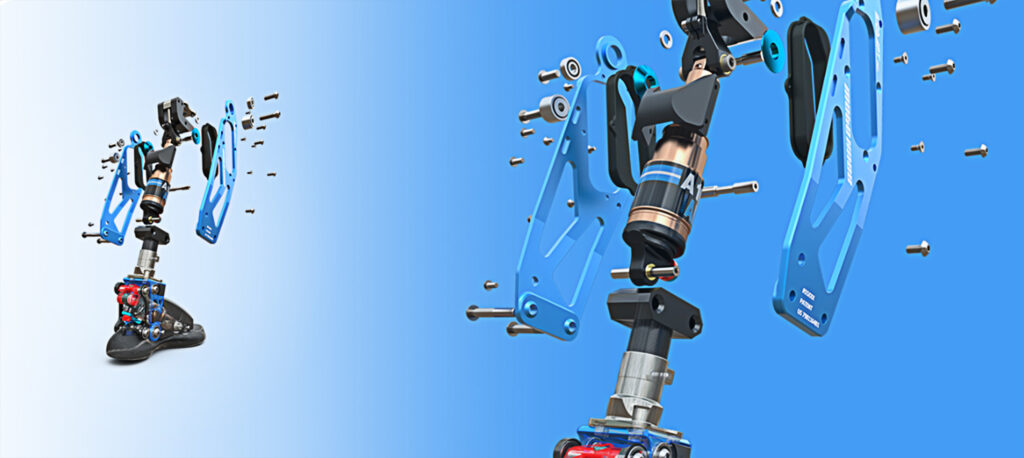
Detail Design
The next step from the conceptual design is the detail design phase. In detail design, specifications and predictions are created while the design is finalized. In this step, which is ready for production, care is taken not to change the general lines of the design. Requests that have been changed or specified for the first time are evaluated and analysed.
By discussing how the analyses can be integrated into the concept, the changes to be made in the design are determined and corrected, and feedback is given to the user. It is known that detail design is the most important step in defining the costs of a project, as shown by practical and theoretical applications that have taken place over the years.
By discussing how the analyses can be integrated into the concept, the changes to be made in the design are determined and corrected, and feedback is given to the user. It is known that detail design is the most important step in defining the costs of a project, as shown by practical and theoretical applications that have taken place over the years.
In detail design, it is ensured that the overall design plan meets the project objective. At the detailed design stage; The resulting design should be detailed to include the engineering data necessary for production. At this stage, information about the project, instructions, standards should be documented appropriately. It should be ensured that legal requirements such as desired or required safety standards in the design are met. The detailed design phase covers every information about the whole project, including business partner satisfaction and the functionality of the design.
Technical calculations and design form the basis of detailed design. At this stage, the parts are modelled and verified by making necessary examinations. All details of production and design should be defined in detail in this step. Here, the designer's task is to document and identify the necessary information regarding parts, assembly, materials and the project. After the drawings, models and assembly plan have been determined in detail, the next step is to verify the design.
Technical calculations and design form the basis of detailed design. At this stage, the parts are modelled and verified by making necessary examinations. All details of production and design should be defined in detail in this step. Here, the designer's task is to document and identify the necessary information regarding parts, assembly, materials and the project. After the drawings, models and assembly plan have been determined in detail, the next step is to verify the design.
Design Validation Studies
Verification of the design can be considered as checking that design provides the targeted competencies and obtaining compliance by the customer. ISO 9001:2015 form is a document that organizations use for design planning and verification, adapting it to their needs. More than one method can be used during the verification phase. In this step, if there is an alternative calculation method, some results can be obtained based on this method and the data can be compared. In another method, some results can be obtained by comparing the design with similar ones. Tests, experiments and reverse engineering methods can be used during verification. At this stage, it may be useful to review the documents, reports, proceedings and specifications created during the design process.
The general outlines of the planning at the design verification stage are mechanical design controls, controls of the technical drawings created, controls of the manufacturability and applicability of the design. At this verification stage, it is aimed to meet the required standards and customer satisfaction.
The general outlines of the planning at the design verification stage are mechanical design controls, controls of the technical drawings created, controls of the manufacturability and applicability of the design. At this verification stage, it is aimed to meet the required standards and customer satisfaction.
Technical Drawing
SIMUNES creates technical drawings of prototypes and ready-to-run products together with its expert design engineers, depending on customer requests. Great care is taken in the preparation of drawing letterheads, including line weights and font criteria. If there is an assembled structure in the design, the order of the fasteners is made by taking into account the assembly sequence and the production methodologies suitable for the assembly sequence.
Technical drawings of the parts to be produced are created by adding detailed notes of processes such as appropriate geometric tolerances, shape, position tolerances and surface roughness, coating and paint suitable for materials. Thus, technical drawings are prepared by showing all sufficient information to be used in the production processes of three-dimensional models.
Technical drawings of the parts to be produced are created by adding detailed notes of processes such as appropriate geometric tolerances, shape, position tolerances and surface roughness, coating and paint suitable for materials. Thus, technical drawings are prepared by showing all sufficient information to be used in the production processes of three-dimensional models.
Assembly Documentation
2D and 3D graphic contents are prepared by the SIMUNES engineering team in order to bring together, clearly explain, present and market the designed products. Documents created by SIMUNES contain all necessary and sufficient information to explain processes and procedures such as 3D engineering models, manufacturing assembly instructions in technical communications, product manuals, installation instructions, service manuals, training guides, marketing brochures and sales offer kits.
Thus, the comprehensibility of the projects is further improved and the user errors that may occur during installation are tried to be eliminated via the visualized details. While preparing the assembly documentation, studies are carried out within the scope of international standards and company standards.
Thus, the comprehensibility of the projects is further improved and the user errors that may occur during installation are tried to be eliminated via the visualized details. While preparing the assembly documentation, studies are carried out within the scope of international standards and company standards.
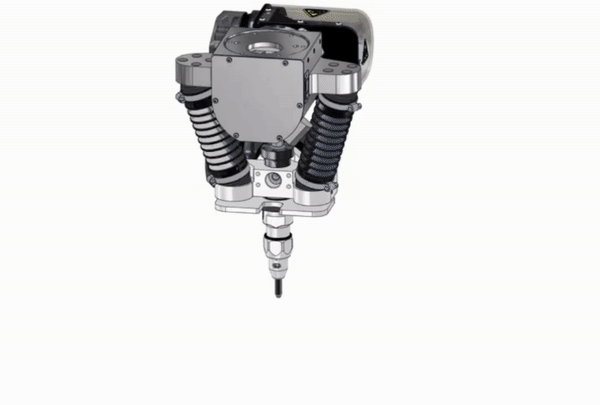
MILITARY PRODUCT DESIGN
Time-varying conditions and developing increasingly important in the design of military systems, physiological, psychological, and environmental data revealed by many factors have been used in military applications by examining the scope of ergonomics.
Ergonomic designs and solutions are greatly needed in order to meet physiological and psychological needs in the most appropriate, comfortable and convenient way in limited areas where many personnel are required to live together for a certain period of time.
As SIMUNES, we design, develop and produce military systems and equipment, including systems used in critical missions with a user-friendly design approach. In addition, many issues such as vibration, lighting, temperature, noise, toxic gases are taken into account in our military product design services in designs related to military systems and optimal design solutions are developed. SIMUNES' products in this field include in-vehicle equipment connection systems, cable winding unit, Decking ladder on the vehicle.
Our product design in military applications, the MIL-STD-810G Defence test method Standard, MIL-STD-1472G Defence design criteria Standard, MIL-STD-464 testing military Standard, MIL-STD-499 engineering are performed in accordance with the requirements of the management system standard.
Ergonomic designs and solutions are greatly needed in order to meet physiological and psychological needs in the most appropriate, comfortable and convenient way in limited areas where many personnel are required to live together for a certain period of time.
As SIMUNES, we design, develop and produce military systems and equipment, including systems used in critical missions with a user-friendly design approach. In addition, many issues such as vibration, lighting, temperature, noise, toxic gases are taken into account in our military product design services in designs related to military systems and optimal design solutions are developed. SIMUNES' products in this field include in-vehicle equipment connection systems, cable winding unit, Decking ladder on the vehicle.
Our product design in military applications, the MIL-STD-810G Defence test method Standard, MIL-STD-1472G Defence design criteria Standard, MIL-STD-464 testing military Standard, MIL-STD-499 engineering are performed in accordance with the requirements of the management system standard.
PLASTIC PART DESIGN
Plastic is a material that is frequently used today with industrialization, and has a wide range of uses in all areas of life. Plastic special production products are obtained in many sectors such as defence industry, automotive, white goods, electronics, medical industry, agriculture sector, space industry, with plastics used at the highest level today. The process of Plastic part design and production requires technical knowledge.
Technical characteristics, quality, etc. of raw materials and auxiliary materials to be used in production. The production should be planned by who have knowledge in such matters. The plastic industry also includes the production of plastic molds in its production process. The production of plastic parts generally takes place in two steps. First of all, the production molds must be designed and modelled correctly with the help of computer aided programs in order to obtain the desired plastic part. Afterwards, the design of mold is completed and produced, the targeted plastic parts can be produced appropriately.
Technical characteristics, quality, etc. of raw materials and auxiliary materials to be used in production. The production should be planned by who have knowledge in such matters. The plastic industry also includes the production of plastic molds in its production process. The production of plastic parts generally takes place in two steps. First of all, the production molds must be designed and modelled correctly with the help of computer aided programs in order to obtain the desired plastic part. Afterwards, the design of mold is completed and produced, the targeted plastic parts can be produced appropriately.
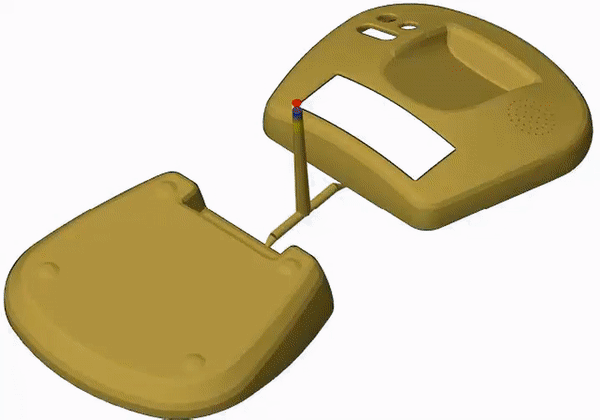
With its engineering knowledge and experience in product design, production and quality control, SIMUNES has the ability to produce fast and successful solutions in plastic part design. The work done throughout the entire process, from identifying the current need and problem to obtaining the final product, is carried out carefully. After defining the technical feature parameters of the raw material to be used, the mold design for mass production begins. In addition to the programs used in the mold making process and the design studies, the simulations of whether the parts will work in harmony with each other are also analysed by the SIMUNES engineering team. Thus, the product is made ready for virtual and real prototyping. If a design has been made that will meet all the requirements, the production stage is started.

INDUSTRIAL DESIGN
Industrial design is the transformation of conceptual ideas into design options prepared for user needs and problems, and the transformation of these options into original, creative, functional, ergonomic, etc. It is the design of new and up-to-date products by evaluating the design solution criteria.
Recently, within the scope of production and marketing studies, industrial design has often made its name known in the sector as a competition and development tool. Goals such as the ability of global and local companies to influence their customers, to be different from their competitors in the current competitive environment and to create a unique image of themselves bring industrial design to the forefront.
Within the scope of industrial design service, SIMUNES offers the development of the product from concept design to prototyping, improvement of the existing product, creation of detailed mechanical design and realization of designs suitable for mass production. In addition, professional visualization processes and product visuals of final designs, that are closest to reality, are created within the scope of this process.
Recently, within the scope of production and marketing studies, industrial design has often made its name known in the sector as a competition and development tool. Goals such as the ability of global and local companies to influence their customers, to be different from their competitors in the current competitive environment and to create a unique image of themselves bring industrial design to the forefront.
Within the scope of industrial design service, SIMUNES offers the development of the product from concept design to prototyping, improvement of the existing product, creation of detailed mechanical design and realization of designs suitable for mass production. In addition, professional visualization processes and product visuals of final designs, that are closest to reality, are created within the scope of this process.
Get an Offer Now
Contact us to get in touch with SIMUNES's dynamic structure that is open to development and its expert staff, and to get an offer about our services.
- info@simunes.com
- +90 312 400 06 84

 en
en  tr
tr